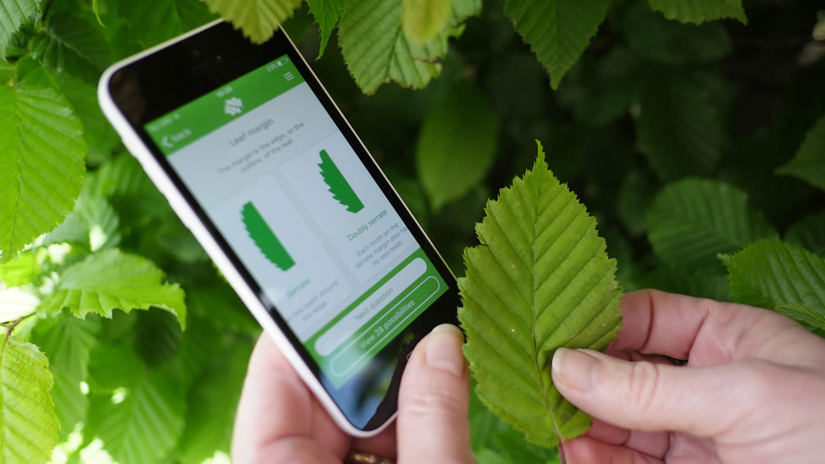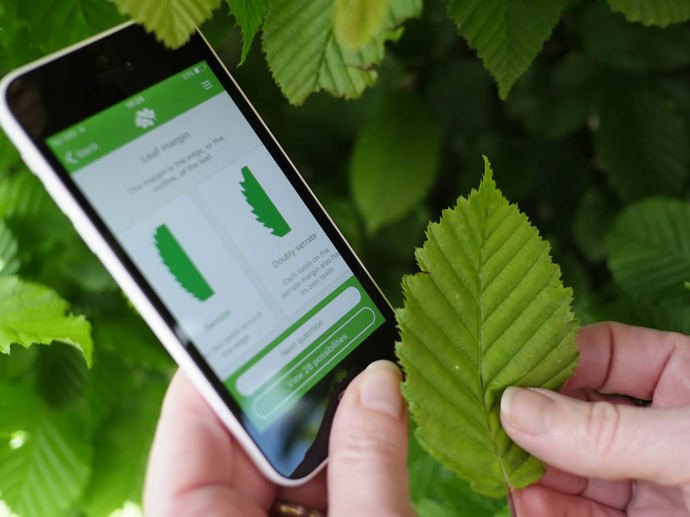Common names: alder buckthorn, glossy buckthorn, breaking buckthorn
Scientific name: Frangula alnus
Family: Rhamnaceae
Origin: native
A reputation for causing a bang. Alder buckthorn is used to make gunpowder, pigments and dyes. It’s a beloved plant of the brimstone butterfly.
Common names: alder buckthorn, glossy buckthorn, breaking buckthorn
Scientific name: Frangula alnus
Family: Rhamnaceae
Origin: native
Mature trees can grow to a height of 6m. The outer bark is dark brown but the inner bark is bright yellow when exposed. Unlike purging buckthorn, the branches and stems are smooth and thornless. The twigs are smooth and straight, purple-brown in colour and have fine white streaks. It is closely related to purging buckthorn (Rhamnus cathartica).
Look out for: leaves placed alternately along the twig, with 6–10 pairs of lateral veins that do not curve towards the tip.
Identified in winter by: buds which do not have scales and are hairy. Peeling back the bark surface reveals yellow bark underneath.

Credit: Ian Andrews / WTML
Alternately arranged leaves. Narrower than those of purging buckthorn, matt green, oval, 3–7cm long and slightly hairy. They have a rounded tip but are tapered towards the stalk.

Credit: David Chapman / Alamy Stock Photo
Unlike purging buckthorn, alder buckthorn is hermaphrodite, meaning that male and female reproductive parts are contained within the same flower. The star-shaped flowers are small, 3–5mm in diameter, with five greenish-white triangular petals. They appear in May to June in clusters in the leaf axils.

Credit: Nature Photographers Ltd / WTML
After pollination by insects, the flowers develop into a small berry which ripens from green to red in late summer and eventually to a dark purple or black in early autumn.
Dogwood (Cornus sanguinea) which is not spiny or purging buckthorn (Rhamnus cathartica) which has opposite as opposed to alternate leaves.


Download our free Tree ID app for Android and iPhone to identify the UK's native and non-native trees. It's an A-Z tree guide in your pocket.
Alder buckthorn is native to most of Europe and spreads as far as western China. It grows best in wet soils and open woods, thriving in scrub, hedgerows, wet heathland, river banks and bogs. Although it prefers acidic soils it can grow on neutral soils as well. It is widespread but rare.

Credit: Gillian Pullinger / Alamy Stock Photo
Alder buckthorn leaves are the main food plant of the brimstone butterfly. The flowers are valuable for bees, and the fruit an important food source for birds, particularly thrushes.

Credit: Bob Gibbons / Alamy Stock Photo
Alder buckthorn, along with other closely related species, was credited with the power to protect against witchcraft, demons, poisons and headaches.
The bark of the alder buckthorn is one of the ingredients used in a herb-based alternative treatment for cancer. Called Hoxsey Therapy, the treatment came to prominence in the 1930s and is still practised in parts of the world today.
The dried bark (and the fruit) was once used as a laxative due to its 3–7% anthraquinone content which stimulates the colon.
A yellow dye is obtained from the leaves and bark. It is used in Russia and turns black when mixed with salts of iron. A green dye is obtained from the unripe fruit, and a blue or grey dye from the ripe berries.
Alder buckthorn charcoal is prized in the manufacture of gunpowder, and is regarded as the best wood for the purpose. It is particularly valued for time fuses because it has a very even burn rate.
Plants have horticultural value and can be grown as an informal hedge.
Because the wood is hard and durable and sharpens well, it has been used to make wooden nails, shoes, shoe lasts, arrows and skewers.